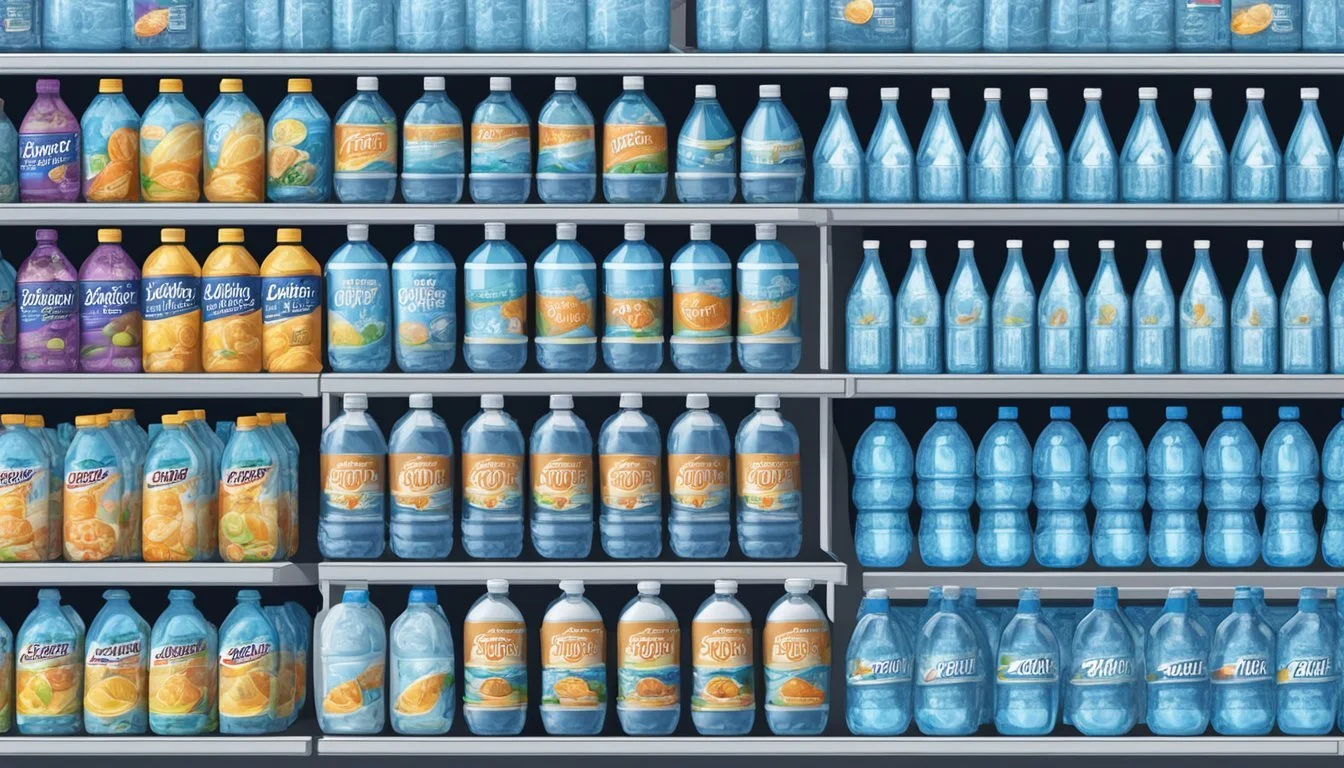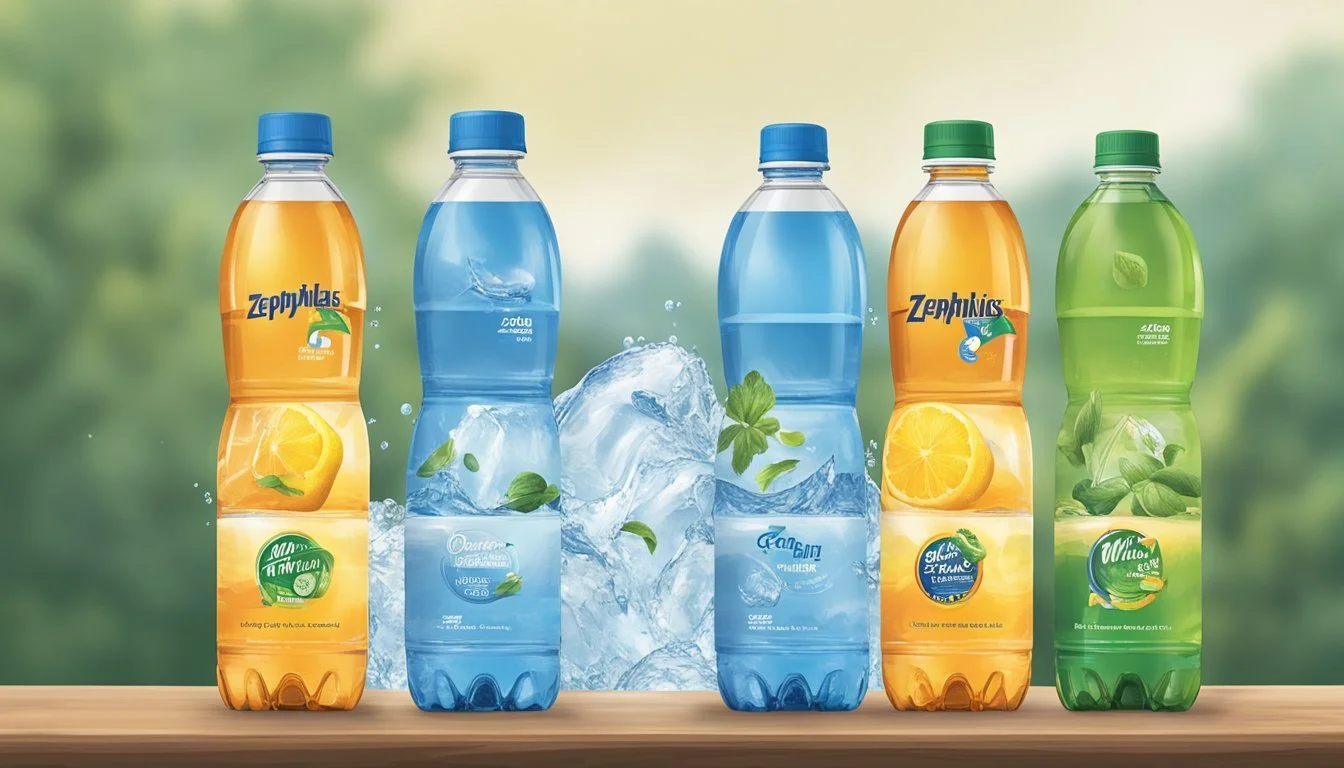Zephyrhills vs. Big Win
A Comparative Analysis of Quality and Taste
In the realm of bottled water, two popular choices often debated are Zephyrhills and Big Win. Zephyrhills prides itself on being natural spring water drawn from carefully selected springs in Florida. It contains naturally occurring minerals that contribute to its clean, refreshing taste and balanced pH level.
Big Win, a more budget-friendly option, offers purified water that typically undergoes extensive filtration to ensure quality and safety. While it may not boast the same spring origins as Zephyrhills, it provides a reliable hydration source that many consumers appreciate for its consistency and value.
For those prioritizing natural mineral content and spring origins, Zephyrhills stands out as the superior choice. Despite this, Big Win holds its own by delivering a cost-effective alternative without compromising on essential qualities.
Understanding Bottled Water
Bottled water comes in various types, each regulated to ensure safety and quality. Consumers must be aware of the different classifications, regulatory standards, and their health implications.
Types of Bottled Water
There are several types of bottled water, each with specific characteristics:
Spring Water is sourced from natural springs and often contains natural minerals.
Purified Water undergoes a treatment process to remove impurities and contaminants, resulting in high purity levels.
Mineral Water contains naturally occurring minerals like calcium and magnesium.
Different brands may enhance their water with additional electrolytes, like sodium and potassium, to bolster flavor and hydration.
Regulations and Safety Standards
Bottled water in the United States is regulated by the Food and Drug Administration (FDA). The FDA sets stringent standards to ensure the water is safe for consumption.
Key Regulations:
Labeling: Bottled water labels must accurately reflect the source and type.
Testing: Water undergoes frequent testing for contaminants.
Manufacturing Practices: Facilities must follow Good Manufacturing Practices (GMP) to maintain hygiene and prevent contamination.
Adherence to these standards helps guarantee that bottled water is both safe and clean.
Bottled Water and Health
Bottled water can contribute positively to health, primarily by providing essential hydration. Additionally, mineral water offers benefits through its mineral content, which can support bodily functions.
However, the health implications can vary:
Mineral Content: Beneficial minerals like calcium and potassium support bone health and muscle function.
Purity: Purified water offers a high level of cleanliness, free from most impurities.
Electrolytes: Enhancement with electrolytes can aid in fluid balance and nutrient absorption.
Despite these benefits, consumers should be aware of potential health risks. Over-reliance on bottled water can contribute to plastic waste and environmental concerns.
Evaluating Quality and Purity
When comparing Zephyrhills and Big Win bottled water, it's important to evaluate several key factors like taste, mineral content, and treatment processes. Quality assurance measures also play a significant role.
Taste Profile Analysis
Zephyrhills water is sourced from natural springs in Florida, providing it with a slightly mineral-rich taste. Consumers often describe its flavor as crisp and refreshing.
Big Win, often sold through various retail chains, tends to be more neutral in flavor. It’s usually derived from municipal sources and goes through rigorous filtration, resulting in a clean but less distinctive taste.
The taste of each brand may appeal differently depending on individual preferences for either a more natural spring flavor or a purified water experience.
Mineral Content and Benefits
Zephyrhills boasts a natural mineral composition, including calcium, magnesium, and sodium, inherited from its spring sources. These minerals can contribute to hydration and overall bodily functions.
Big Win, while purified, often lacks a natural mineral profile. Some versions might have minerals added back after purification to enhance taste and health benefits.
A comparison of the mineral content could show Zephyrhills with higher levels of naturally occurring elements, which can be beneficial for maintaining electrolyte balance and supporting metabolic processes.
Treatment and Filtration Processes
Zephyrhills water undergoes several filtration steps to ensure purity while preserving its natural mineral content. The process includes screening for contaminants and using modern technologies to maintain quality without extensive modification.
Big Win, sourced from municipal supplies, typically goes through extensive purification. This might include reverse osmosis, carbon filtration, and UV treatment to remove a wide range of contaminants including heavy metals.
The thorough filtration ensures the safety and purity of Big Win, appealing to those seeking highly purified water.
Quality Assurance Measures
Zephyrhills follows stringent quality standards set by regulatory bodies. Regular testing ensures that the water meets safety norms, minimizing the risk of contaminants.
Big Win equally adheres to quality control measures, often providing detailed reports about its water quality. The frequent testing for contaminants ensures it meets strict safety guidelines.
Both brands are committed to maintaining high quality and purity standards, with robust assurance practices to meet consumer health and safety expectations.
Comparison of Zephyrhills and Big Win
Zephyrhills and Big Win bottled waters differ significantly in their sources, filtration processes, and environmental practices. Understanding these differences is key when choosing the right option for hydration needs.
Source and Origin
Zephyrhills sources its water from natural springs in Florida. The brand emphasizes its Florida origins and proudly displays this information on its packaging. This provides a specific and regional character to the water, appealing to those who prefer locally sourced products.
Big Win sources its water from multiple locations and treats it with filtration processes to ensure purity and safety. This approach offers consistency in quality but may lack the unique regional appeal of Zephyrhills. It often targets budget-conscious consumers looking for reliable water without specific regional ties.
Water Source and Natural Springs
Zephyrhills is famed for being natural spring water, sourced directly from selected springs in the Floridian landscape. This natural origin contributes to its clean taste and perceived quality. The natural springs are a significant marketing point, as the untouched and mineral-rich nature of the water is appealing.
Big Win uses treated, filtered water which may or may not come from natural springs. The focus is on ensuring cleanliness and safety rather than highlighting a specific natural source. This method assures consumers that the water they are drinking meets high standards of purity, even if it lacks the storied background of spring water like Zephyrhills.
Packaging and Environmental Stance
Zephyrhills uses plastic bottles that are recyclable, and the brand has made conscious efforts to promote sustainability. They have initiatives aimed at reducing plastic waste and encourage consumers to recycle. Zephyrhills also invests in environmental conservation efforts around their spring sources, contributing positively to their overall ecological footprint.
Big Win also offers recyclable plastic bottles but their sustainability efforts are more focused on affordability and availability rather than robust environmental programs. While they maintain the industry standard of recyclable packaging, there is less emphasis on additional environmental initiatives. This makes it a practical choice for budget-friendly consumers, though it may not appeal to those prioritizing environmental impact.
In conclusion, the choice between Zephyrhills and Big Win involves weighing the importance of natural spring water and regional sourcing against the consistency and affordability of filtered water. Both brands strive to maintain high water quality standards, though their environmental commitments and brand characteristics differ significantly.
Consumer Preferences and Convenience
Consumers often prioritize convenience and brand reputation when choosing bottled water. They look for products that are easily accessible, transparent about their sourcing and processing, and available in a variety of packaging options to suit different needs.
Brand Reputation and Transparency
When selecting bottled water, consumers heavily weigh brand reputation and transparency. Zephyrhills is backed by Nestlé, which assures a consistent quality. Zephyrhills prides itself on sourcing from natural springs in Florida, ensuring purity and a commitment to sustainability.
Big Win, on the other hand, is less known but markets itself as a budget-friendly option. Consumers seek brands that clearly disclose their water sources and processing methods, which fosters trust and loyalty. Transparency about environmental practices is also critical, as consumers become more eco-conscious.
Availability and Market Reach
Availability is a major factor in consumer choice. Zephyrhills is widely distributed, especially in Florida and surrounding areas. Its market presence is robust, ensuring that consumers can easily find it in most convenience stores and supermarkets.
Big Win is accessible through various retail chains, often positioned as a low-cost alternative. It may not have the same market penetration as Zephyrhills but leverages its availability in budget-friendly stores to attract cost-conscious consumers. Widespread availability directly impacts consumer convenience and brand preference.
Packaging Options for Portability
Packaging options are essential for consumer convenience, particularly for those on the go. Zephyrhills offers multiple packaging choices, including small portable bottles, family-sized packages, and eco-friendlier alternatives like glass bottles.
Big Win focuses mainly on plastic bottles, which appeals to consumers looking for budget options. However, the increasing concern over plastic waste drives some consumers to seek more sustainable packaging. The portability of bottle sizes and materials significantly influences consumer preferences, especially for those conscious of environmental impact.
Consumers value brands that offer portable and eco-friendly packaging, balancing convenience with sustainability. How these brands address these needs shapes their market positioning and consumer loyalty.
The Role of Brands in Bottled Water Choices
Brands in the bottled water industry significantly influence consumer preferences and decisions. Leading brands like Nestlé Pure Life, Dasani, and Aquafina are crucial market players, while innovative brands drive emerging trends.
Market Leaders and Competitors
Market leaders such as Nestlé, Coca-Cola, and PepsiCo dominate the bottled water sector. Nestlé Pure Life is a prominent name, often praised for its widespread availability and affordability. Dasani, a Coca-Cola product, focuses on purity and eco-friendly packaging. PepsiCo's Aquafina emphasizes purity with a strong filtration process. These brands gain consumer trust through large-scale advertising and consistent quality control.
Premium brands like Essentia offer enhanced water with added minerals and electrolytes, targeting health-conscious consumers. Essentia's premium pricing reflects its positioning as a high-quality choice. This tiered market strategy allows brands to cater to various consumer needs and preferences.
Innovative Brands and Industry Trends
Innovative brands are reshaping the industry with unique offerings and sustainability initiatives. For instance, some brands use plant-based bottles to reduce plastic waste. Essentia is known for its ionized alkaline water, appealing to fitness enthusiasts.
Emerging trends include a focus on local sourcing and transparency. Consumers increasingly seek detailed information about water sources and purification methods. Brands that provide this data, such as through QR codes on packaging, gain a competitive edge.
Environmental concerns also drive innovation. Brands investing in sustainable practices, like reducing carbon footprints or utilizing renewable energy, resonate well with eco-conscious consumers. These trends highlight the importance of adapting to changing consumer expectations in the industry.
More About Zephyrhills
Core Hydration vs Zephyrhills: Which Bottled Water is Better?
Icelandic Glacial vs Zephyrhills: Which Bottled Water is Better?
Mountain Valley Spring Water vs Zephyrhills: Which Bottled Water is Better?
Nestle Pure Life vs Zephyrhills: Which Bottled Water is Better?
Poland Spring vs Zephyrhills: Which Bottled Water is Better?
San Pellegrino vs Zephyrhills: Which Bottled Water is Better?
Zephyrhills vs Aqua Carpatica: Which Bottled Water is Better?
Zephyrhills vs Cascade Mountain: Which Bottled Water is Better?
Zephyrhills vs Crystal Geyser: Which Bottled Water is Better?
Zephyrhills vs Hawaii Volcanic: Which Bottled Water is Better?
Zephyrhills vs Hawaiian Springs: Which Bottled Water is Better?
Zephyrhills vs Kirkland Signature: Which Bottled Water is Better?
Zephyrhills vs Purely Sedona: Which Bottled Water is Better?
Zephyrhills vs Richard's Rainwater: Which Bottled Water is Better?
Zephyrhills vs Solan de Cabras: Which Bottled Water is Better?
Zephyrhills vs Talking Rain AQA: Which Bottled Water is Better?
Zephyrhills vs Whole Foods 365: Which Bottled Water is Better?
Zephyrhills vs Whole Foods Italian Still Mineral water: Which Bottled Water is Better?
More About Big Win
Big Win vs Kirkland Signature: Which Bottled Water is Better?
Icelandic Glacial vs Big Win: Which Bottled Water is Better?
Mountain Valley Spring Water vs Big Win: Which Bottled Water is Better?
Richard's Rainwater vs Big Win: Which Bottled Water is Better?
Whole Foods Italian Still Mineral water vs Big Win: Which Bottled Water is Better?




